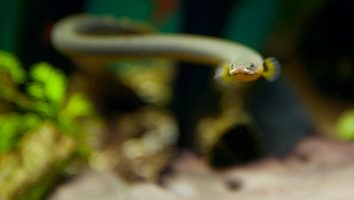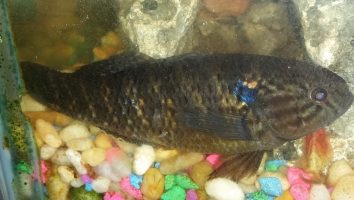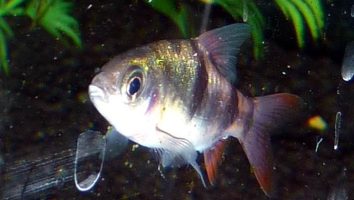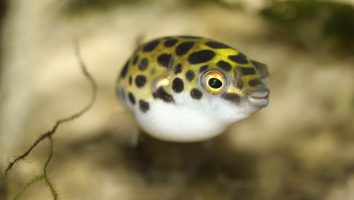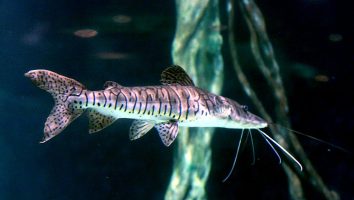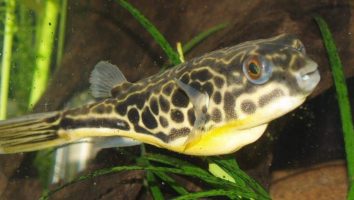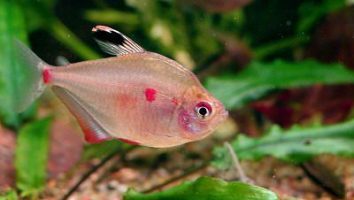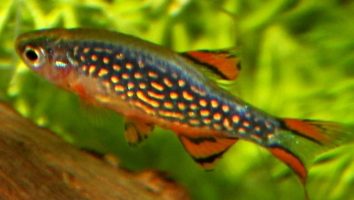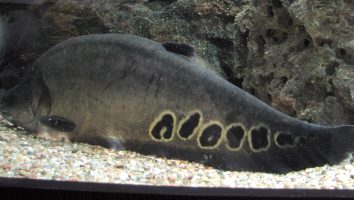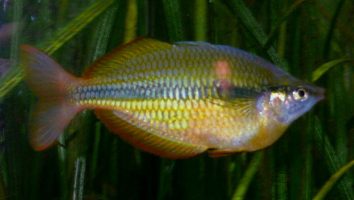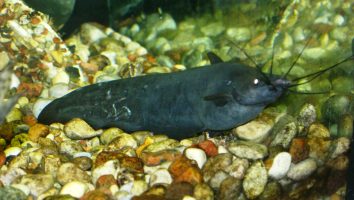The bronze corydoras is a peaceful and hardy freshwater fish that is perfect for beginner aquarium enthusiasts.
This species is very easy to care for and can live in a wide range of water conditions. They are also very active and love to swim in groups.
Bronze corydoras are a great addition to any community tank and get along well with most other fish.
In this guide, we will teach you everything you need to know about bronze corydoras care. You will learn about their diet, habitat, tank mates, and more!
Table of contents
Species overview
The bronze corydoras (scientific name: Corydoras aeneus) is a species of freshwater fish that is native to South America.
They are found in a wide variety of habitats, but prefer slow-moving waters with a lot of vegetation. This could be anything from a river to a swamp.
Bronze corydoras are very popular in the aquarium trade due to their peaceful nature and their ability to thrive in a wide range of water conditions. They are also very easy to care for, which makes them a good choice for beginner aquarium hobbyists.
One of the most notable things about this fish is their unique coloration. As their name suggests, they have a bronze hue to their body with black markings on their fins. This give them a very distinct appearance that is sure to stand out in any tank.
Appearance
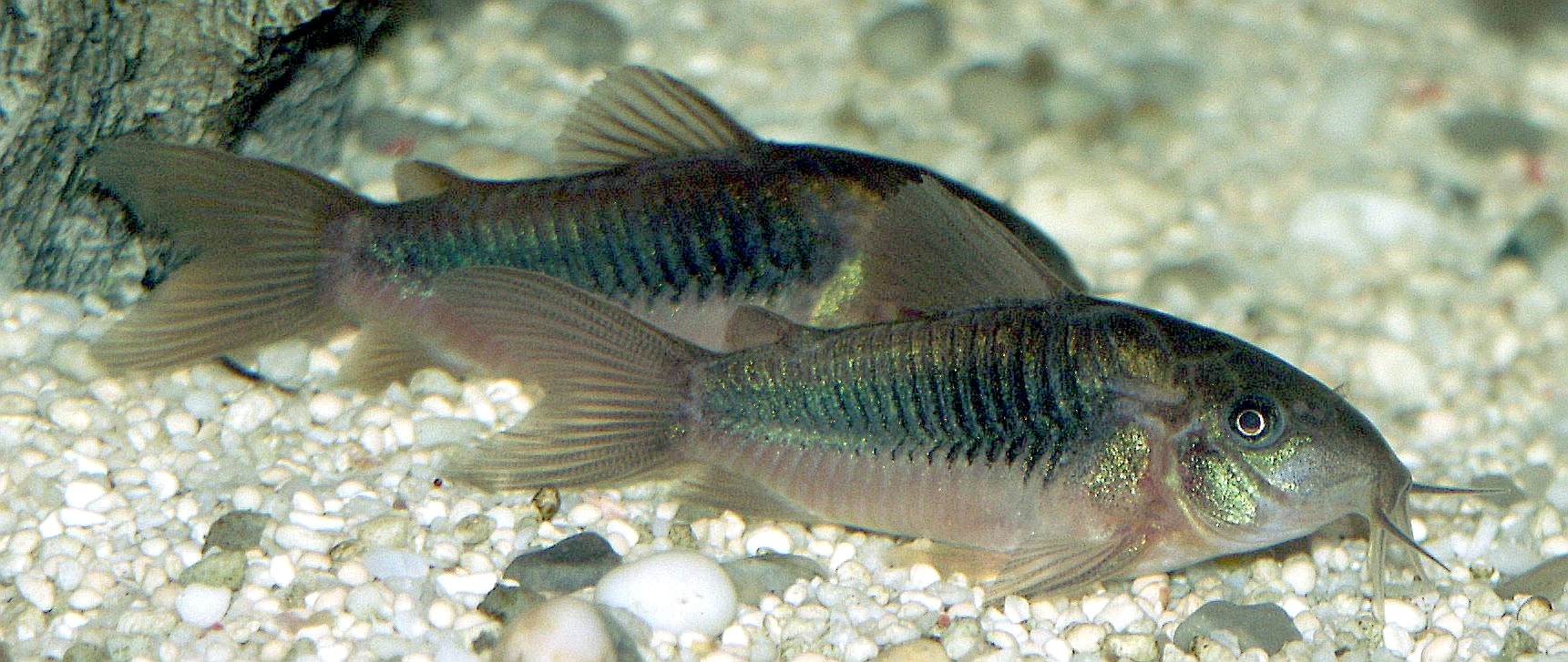
The very first thing you’ll notice about this bottom-dwelling fish is their color. As their name suggests, they have a very distinct bronze coloration that can range from a golden brown to almost black.
This color is broken up by a dorsal stripe that starts at their eyes and runs the entire length of their body. This stripe is usually a dark black or brown.
You’ll also notice that they have a black stripe that goes along their lateral line. This is a line of pores that helps them “feel” the water around them.
Each of their fins is tipped with black as well. The dorsal fin is triangular and starts about halfway back on their body. Their caudal fins are also triangular and their anal and pectoral fins are relatively small.
These fish have a “ armored” look to them due to the large plates that cover their bodies. These plates start at their head and continue all the way down to the end of their tail.
Lifespan
The average lifespan of a bronze corydoras is around 5 years. However, with proper care, they can live up to 10 years in captivity!
There are a number of things that impact their lifespan. One of the biggest is water quality. These fish are very sensitive to changes in water parameters and even a small change can be deadly.
They’re also very sensitive to stress. Things like bad tank mates or a suboptimal diet can shorten their lifespan significantly.
Size
The average adult size for a Bronze Corydoras is between 2.5 and 3.5 inches. These bottom-feeders are relatively small, which is good news for those who don’t have a lot of space in their tanks.
Tank
Tank Size
The minimum recommended tank size for bronze corydoras is 10 gallons. This fish is a schooling fish so you will need to have at least 5-6 fish in order for them to be happy and thrive. If you want to keep a larger school, you will need an additional 2-4 gallons per fish.
Water Parameters
The bronze corydoras is a tropical fish that requires warm water and prefers a slightly acidic to neutral pH.
The ideal water temperature for this species is between 72° and 79°F. The ideal pH is between 6.5 and 7.5.
Water hardness can range from 2 to 12 dGH. Alkalinity levels should be between 4 and 8 dKH.
What To Put In Their Tank
When it comes to setting up the interior of a Bronze Corydoras tank there are a few key things you need to remember.
First and foremost, these fish are bottom dwellers. This means that the bulk of their time will be spent near the substrate. As a result, you want to make sure that the substrate you choose is soft and not too sharp.
These fish are also known to be pretty active. They’ll often swim in large schools and can be a little boisterous when they do.
Because of this, you want to make sure there’s plenty of open swimming space in their tank. This means avoiding too many decorations and keeping the plants to a minimum.
That being said, these fish do like some hiding spots. A few caves or pieces of driftwood can help provide them with the security they need. Just don’t go overboard with it!
As for the plants, you have a few options. Silk plants are always a good choice since they’re very tough and can’t be uprooted. Alternatively, you can go with live plants that are fast-growing (to keep up with the fish).
Some good choices include Hornwort, Water Wisteria, and Java Moss.
Common Diseases
Fortunately, Bronze corydoras are quite hardy fish. They’re not immune to disease, but they’re not especially prone to it either.
The most common disease that these fish experience is ich. This is a parasite that can affect any freshwater fish, and it’s especially common in corydoras.
Ich will present itself as white spots on the body, fins, and gills of your fish. If left untreated, it can be fatal.
Fortunately, ich is fairly easy to treat. There are a variety of methods you can use, but the most common is to raise the temperature of the water in your tank. This will speed up the life cycle of the parasite, and it will eventually die off.
Of course, the best way to prevent your fish from getting sick is to maintain a clean and stable tank. This will make your fish much more resistant to disease, and it will also make it easier to spot an illness if one does occur.
Behavior & Temperament
The bronze corydoras is a peaceful fish that does best in a community tank. It is a bottom-dweller that spends most of its time scavenging the substrate for food.
The bronze corydoras is a shy fish that does best in a tank with plenty of hiding places. It is also a social fish that does best in a group of at least six.
The bronze corydoras is a peaceful fish that gets along with most other tank mates. However, it may be bullied by larger or more aggressive fish.
The bronze corydoras is a hardy fish that is easy to care for. It is a good choice for beginners.
Tank Mates
Corydoras are a peaceful and social species that does well in groups. In the wild, these fish are often found in schools of dozens or even hundreds of individuals.
As a result, they’re much happier and healthier when kept in groups in the aquarium. A good rule of thumb is to add at least six corydoras to the tank.
Not only will this make your bronze corydoras happier, but it will also help to cut down on aggression. These fish are less likely to pick on each other when they’re in a group.
When it comes to choosing tank mates for bronze corydoras, the options are endless. These fish do well with most community fish species.
Here are a few suggestions to get you started:
- Neon Tetras
- Guppies
- Platies
- Mollies
- Swordtails
- Danios
- Rasboras
Breeding
Bronze corydoras are one of the most popular species of Corydoras, and they’re also one of the easiest to breed. These little guys are known for being great parents, and they’ll take care of their fry without any help from you.
To get started, you’ll need a breeding tank that’s at least 20 gallons. The water temperature should be between 72 and 79 degrees Fahrenheit. The water should also be on the softer side with a pH around 6.5.
Next, you’ll need to add some plants and hiding places. These fish like to lay their eggs on plants, so live plants are ideal. You can also use fake plants as long as they’re smooth and won’t tear the eggs.
When everything is set up, it’s time to add the fish. You’ll need at least six, but more is better. Aim for a ratio of two females for every male.
Once the fish are in the tank, you should start to see some breeding behavior. The males will chase the females and try to impress them with their displays.
If everything goes well, the females will lay their eggs on the plants. The males will then fertilize them.
Once the eggs are laid, the parents will guard them. The fry will hatch in about a week. At that point, you can remove the parents and start feeding the fry baby brine shrimp.
Conclusion
The Bronze Corydoras is an excellent addition to any freshwater aquarium. They are peaceful, beautiful fish that are very easy to care for.
We love that they are so easy to care for and that they do well in a community tank.
The only downside to this fish is that they are not very tolerant of changes in water parameters. So, you will need to be very careful when you are doing water changes and make sure that the new water is very close to the same as the old water.
Other than that, we think they are great fish and would highly recommend them to anyone!

